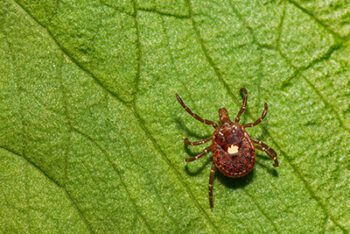
Living in tick-infested areas like Suffolk County & Nassau County, Lyme Disease is definitely something to be cautious about. Among all of the tick-borne illnesses, Lyme Disease stands out as the most frequently diagnosed in the United States—and, left untreated, it can have some serious health consequences over time. Here’s what you should know about Lyme Disease, how it spreads, and how you can protect yourself.
What Is Lyme Disease?
Lyme Disease is a bacterial infection triggered by the bite of an infected tick. It often presents with a distinct circular red rash, resembling a bullseye. If not treated promptly, it can spread to the joints, heart, and nervous system, which can lead to permanent or long-lasting health issues. That said, early of Lyme Disease symptoms typically include:
- Fatigue
- Headache
- Fever
- Skin rash
How Does Lyme Disease Treatment Work?
The CDC states that early antibiotic treatment usually results in a quick and complete recovery. Even those treated in later stages generally respond well to antibiotics, though some may experience persistent symptoms depending on how long the disease went untreated.
How Do Ticks Spread Lyme Disease?
Lyme Disease is primarily spread by two types of ticks: the black-legged tick, also known as the deer tick, and the Western black-legged tick.When a tick carrying the Lyme bacteria, Borrelia burgdorferi, finds a host—typically a human or animal—it attaches itself and begins to feed on the host’s blood. During this feeding process, which can last from 36 to 48 hours, the bacteria are transmitted from the tick’s saliva into the host’s bloodstream. Anywhere from 3 to 30 days later, victims may start to notice early symptoms.
It’s important to note that not every tick bite leads to Lyme Disease; the tick must be infected and attached for a significant period of time. That’s why it’s always a good idea to invest in tick control around your home and remember to check your body after spending time outdoors, especially near grassy areas.
Why Lyme Disease is Becoming More Common
Lyme Disease cases are more common in the spring when ticks are more active and people start spending more time outdoors. But, year over year, the problem has been consistently growing since about 2019.
This rise is attributed to a growing deer tick population, driven by warmer winters and an increase in deer populations, which serve as hosts for ticks. The U.S. Environmental Protection Agency (EPA) notes that deer ticks thrive in environments with at least 85% humidity and are most active when temperatures exceed 45 degrees Fahrenheit. Consequently, warmer temperatures lead to larger tick populations.
In 2022, health officials reported a nearly 70% increase in Lyme Disease cases across the U.S. This surge, with reports exceeding 62,000 compared to an annual average of around 37,000 from 2017 to 2019, was primarily due to changes in reporting criteria caused by the focus on COVID-19 case reporting.
Best Way to Prevent Lyme Disease
Preventive measures such as wearing appropriate clothing, avoiding tall grass, and carrying a tick remover are helpful, but the best defense against ticks and Lyme Disease is to enlist the help of tick control professionals. After all, it’s incredibly difficult to avoid bites if ticks are hiding all around your landscape just waiting to attach to a host.
Suburban Exterminating is dedicated to eliminating ticks from your surroundings and helping to reduce Lyme Disease cases in Suffolk County & Nassau County. Our licensed professionals employ the latest technology and methods to ensure your outdoor areas are safe and tick-free. To get started, contact us today for a free service quote.

